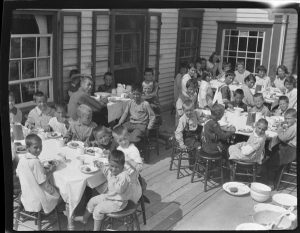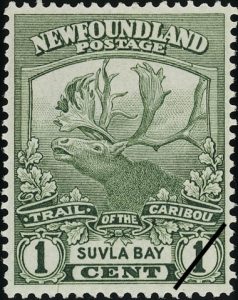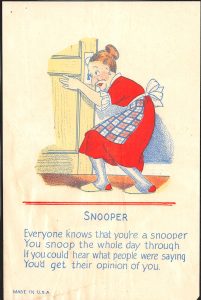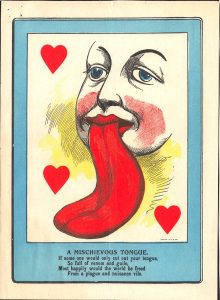February 22, 1919
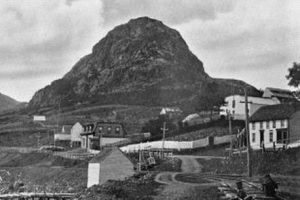 In February 1919 throughout the towns and bays of Newfoundland and Labrador the soldier boys who had signed up to fight for “King and Country” were returning home among them were the soldiers from Holyrood.
In February 1919 throughout the towns and bays of Newfoundland and Labrador the soldier boys who had signed up to fight for “King and Country” were returning home among them were the soldiers from Holyrood.
The St. John’s newspaper the Evening Telegram reported on February 22, 1919:
“The soldier boys of Holyrood were accorded a big welcome home ….. The little town was en fete with bunting and the cannon thundered forth its roars of welcome as the train approached the station.”
Engineer Candow, of the Newfoundland Railway as he approached the town with the soldiers; ( J. Flood, R. Walsh, Edward Besso, Edward Maloney and John Flynn) aboard “long and oft-repeated tooting of his horn” giving the residents notice that “he was pulling something more than the common carrier along.”
Many gathered at the train station to acclaim the returning heroes.
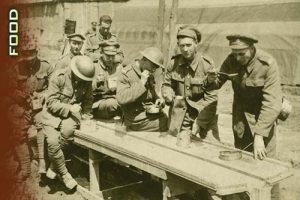 Good Food and Interesting War Stories
Good Food and Interesting War Stories
Miss Flynn, the Secretary of the Women’s Patriotic Association, and the young ladies of the Patriotic Committee were busy organizing an evening party with plans of banqueting the returning soldiers and sailors in the Star Hall.
The guests to the evening party included the soldiers and sailors, their relatives and a large number of their friends and well-wishers, that were seated at two tables erected lengthwise in the Hall. Among the guests was the parish priest the Reverend W. P. Finn presided at the soldiers’ table.
The newspaper reported:
“As regards quantity, quality and variety the table appointments left little to be desired, and all partook of a hearty meal, the soldiers in the meantime entertaining there with some interesting war stories.”
When supper had been finished the assembly was called to order and patriotic speeches, expressions of welcome, congratulations and thankfulness to the soldiers were made by the Chairman, Rev. Father Finn, and Mr. R. Dwyer, Justice of the Peace ., to which Lc. Corpl. J. Crawley neatly replied on behalf of his comrades- in arms.
This part of the ceremonial having been finished, the Hall was cleared for the dance, an attractive feature to the young folk, and fiddler FOLEY was kept busy handing out some good stuff to his customers till the approaching hours of daylight bade the wearied performers retire to their homes, for a needed rest.
The promoter of this happy reunion for a worthy purpose and her active committee of young ladies must feel proud of the success of their efforts for nothing essential in the ceremonial that usually features in welcome homes was lacking, are deserving of the best thanks of the country as well as the community.
For the occasion, the Hall was nicely decorated and draped with the flags of the Allies, and a motto bearing the good old Irish welcome stood prominently in the foreground.
 Regimental Records of the Newfoundland Regiment at the Rooms.
Regimental Records of the Newfoundland Regiment at the Rooms.
The Regimental Records of the Newfoundland Regiment suggest that 20 Holyrood boys felt the call to duty and enlisted in the service of their King and country, and went overseas—over there with the Newfoundlanders to help out the mother country in the titanic struggle to destroy Prussian militarism and Hun barbarism.
Addressing the crowds gathered, Rev. Father Finn said “we have welcomed some back; we will welcome others who are still absent as duty’s call perhaps in the sweet by and by but alas!, there are some we shall never welcome back. They have made the Supreme Sacrifice and are now sleeping peacefully overseas and under the shell-torn sods of France and Belgium.
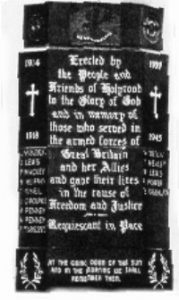 Among the Holyrood boys that made the “Supreme Sacrifice” were:
Among the Holyrood boys that made the “Supreme Sacrifice” were:
MURPHY, Martin: Regimental # 3655; Age 22; Next of Kin Martha Murphy; Attestation 1917. Died December 3, 1917
TARGETT, Frederick Joseph: Regimental #1743; Age 25; Next of Kin, Sarah Targett; Attestation 1915. Died: October 16, 1916
LEWIS, John Thomas; Regimental # 2746; Age 19: Next of Kin; Attestation 1916. Died Friday, April 12, 1918
There are a number of other men who died in the First World War that are inscribed on the war memorial in Holyrood but they are from neighboring communities. The names of the men from Holyrood who died are inscribed on the war memorial included:
Lucas Holden, Harbour Main, Regimental #329, Age 21; Next of Kin: Son of William V. and Alice Holden, of Harbor Main, Newfoundland. Died July 1, 1916 Buried at: Serre Road Cemetery No. 2, Serre-les-Puisieux, France
Corporal John O’Rourke. John’s Pond, St, Mary’s Bay, Regimental #3345, Age 21, Died: October 20, 1918; Buried: Vichte Military Cemetery, Belgium
Private Augustus Penney: Regimental #1399, Age 22 Next of Kin: Patrick and Helen Penney, of Harbor Main, Died: July 1, 1916; Buried at: Y Ravine Cemetery, France
Other names inscribed are P. Mackey, P. O’Neil, and M. Penney unfortunately no information is available at this time.
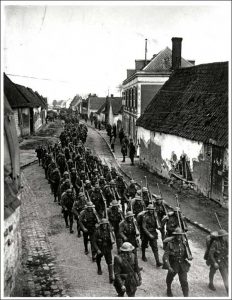 Those that survived and eventually made their way home to Holyrood were:
Those that survived and eventually made their way home to Holyrood were:
Mullowney, Edward: Holyrood, Regimental # 4713; Age 18 next of kin James Mullowney, attestation 1918.
HICKEY, Michael John: Holyrood, Regimental # 1415; Age 21 next of kin John Hickey , attestation 1915
CURRAN, William: Holyrood, Regimental # 4760; Age 25 next of kin William Curran, attestation 1918
CRAWLEY, John T: Holyrood, Regimental #5765; Age 19. next of Kin, Patrick Crawley . Attestation 1918
CRAWLEY, John: Holyrood, Regimental #2158; Age 20; next of kin Cornelius Crawley. Attestation 1916
CRAWLEY, Albert W: Holyrood, Regimental # 4009; Age 23; next of kin Elizabeth Crawley. Attestation 1917
TUBRETT, Leo Holyrood, Regimental # 5795; age 19; next of kin, Thomas Tubrett. Attestation 1918
OBRIEN, Gerald Holyrood, Regimental # 4800; age 22; next of Kin , John O’Brien. Attestation 1918
KENNEDY, Michael Holyrood, Regimental # 2552; age 23; next of kin, Mrs. Michael Kennedy. Attestation 1916
FLOOD, Joseph: Holyrood, Regimental #4662; age 26; Next of Kin, Edward Flood , attestation 1918
WALSH, Ronald Patrick: Holyrood, Regimental # 4712; age 29; Next of Kin, Margaret Walsh attestation 1918
WALSH, Augustus J: Holyrood, Regimental #3914; age 22: Next of Kin Patrick Walsh. Attestation 1917
WALL, Leo: Holyrood, Regimental #5808; age 23; Martin Wall Attestation 1918
WALSH, Frank: Holyrood, Regimental # 161; age 20; Next of Kin ,William P. Walsh Attestation, 1914
DWYER, Patrick: Holyrood, Regimental # 3927; age 24; Next of Kin; John Dwyer Attestation
DOBBIN, Charles: Holyrood, Regimental # 2539; age 18; Next of Kin; Denis Dobbin, Attestation 1916
BARRETT, Gregory: Holyrood, Regimental # 1822; age 20 ; Next of Kin; Mary Healy . Attestation 1915
Recommended Archival Collection: Over 6000 men enlisted in the Newfoundland Regiment during the First World War. Each soldier had his own story. Some soldiers’ stories were very short; other soldiers who were lucky enough to survive the war had a longer story to tell. Each story is compelling. Read More: https://www.therooms.ca/thegreatwar/in-depth/military-service-files/database
Recommended Museum Exhibit: The First World War had a profound impact on Newfoundland and Labrador. Our “Great War” happened in the trenches and on the ocean, in the legislature and in the shops, by firesides and bedsides. This exhibition shares the thoughts, hopes, fears, and sacrifices of Newfoundlanders and Labradorians who experienced those tumultuous years – through their treasured mementoes, their writings and their memories. https://www.therooms.ca/exhibits/now/beaumont-hamel-and-the-trail-of-the-caribou





